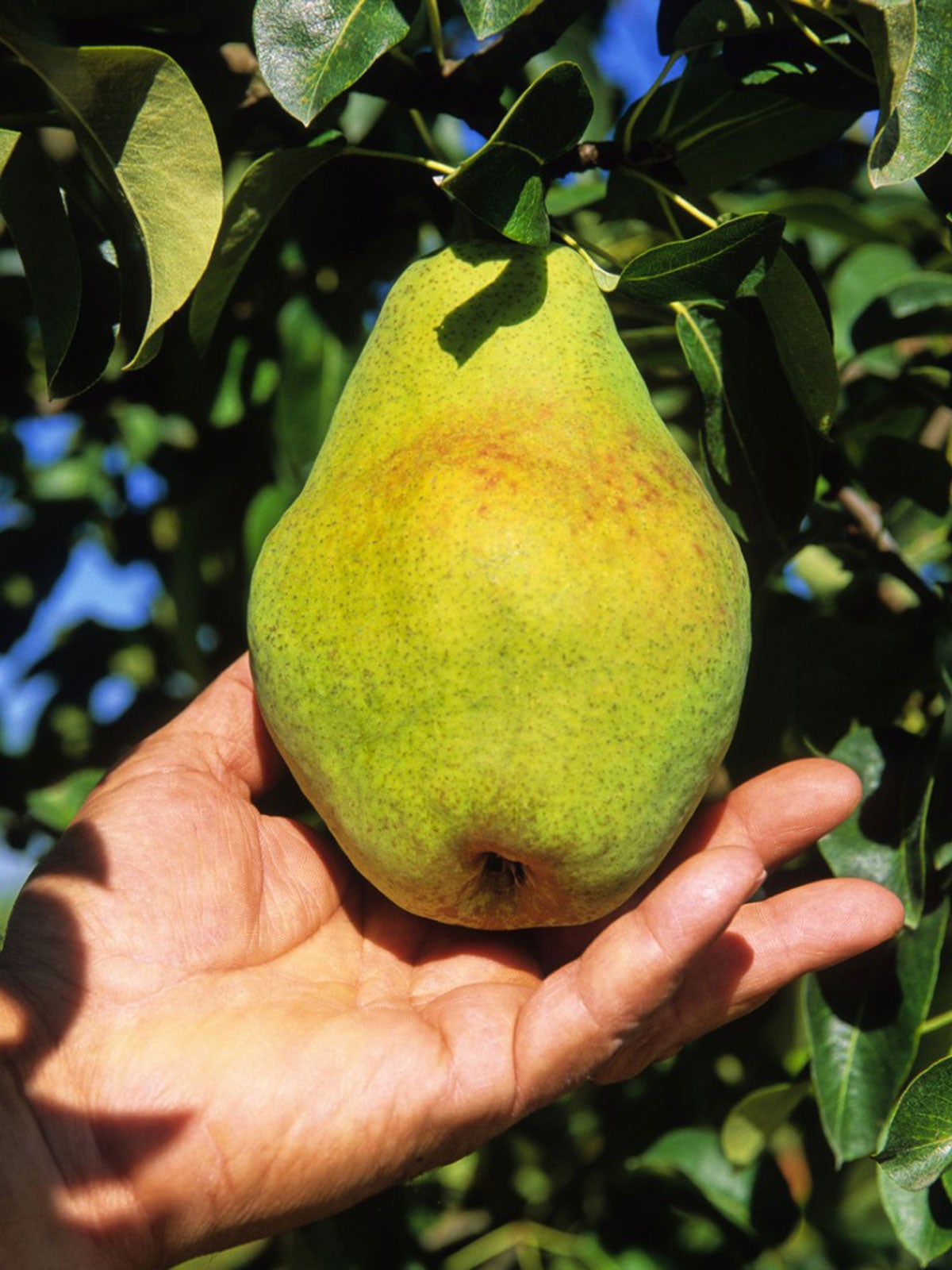When Are Pears Ripe To Eat: Learn About Pear Tree Harvest Time


One of summer’s finest fruits is the pear. These pomes are one of the few fruits that are best when picked under-ripe. Pear tree harvest times will vary according to the variety. The early varieties are ready up to a month sooner than late-blooming types. Either way, it is best to pick them firm rather than waiting for them to ripen on the tree. When are pears ripe to eat? They are ready after some counter time unless you like soft, mealy fruit.
When are Pears Ripe to Eat?
It's always hard to wait for something good but often the waiting just enhances the experience. This is the case with pears. Pears don’t ripen best on the tree. They ripen from the inside out and develop soft interiors with a mushy, grainy texture. Pears should be firm and juicy for the best results eaten out of hand or canned. Habitual canners know how to pick pears and when they are ready for use. Take some tips from experts to prevent your harvest from maturing to mush and maximize your crop. According to professional growers, pears should be allowed to ripen off the tree rather than on the stem. This is because pears will overdevelop on the plant, resulting in soft texture and overly sugared flesh. If you pick your pears when they have sweetly blushed skin but are still firm and slightly under-ripe, you can ripen them on the counter or in a paper bag for a week. The delicious flavor will come out in about a week and the flesh approaches its best texture. Each fruit will come into its best maturity at slightly different times due to environmental factors, so when harvesting a pear tree, each pome will need to be individually considered before picking.
Pear Tree Harvest Time
The optimum time for picking pear fruit will vary dependent on your zone. United States Department of Agriculture zones 5 and 6 harvest around August. Warmer climes can expect mature fruit a bit earlier. You should begin by checking a few fruits to see if they are mature enough. Extremely young pears won’t be developed enough to produce the necessary sugars after leaving the branch. Take a pear gently in your hand and lightly tip it away from the branch. If the fruit comes off easily, it is ready to take. Those that resist should be left on the tree to mature a bit more. This hand picking test is the best way to decide when to start picking pear fruit since texture and color will vary by variety and are not a good indicator of maturity.
How to Pick Pears
You should have a basket or other container when harvesting a pear tree. I like to line mine with dish towels to help cushion the fruit and prevent bruising. Once you have easily separated the pear fruit that is mature, bring it indoors to ripen. You can keep the pears longer by storing them at 30 degrees Fahrenheit (-1 C.). This cooling period enhances the ripening process. Bartlett pears only need a day or two of chilling, but many of the other varieties benefit from two to six weeks of cooling. Then it is time to force ripening. You can simply leave the pears on the counter in an area with 65 to 75 degree temperatures (18-23 C.) or put them in a paper bag with a banana or apple. These fruits give off ethylene gas, which encourages ripening. It’s a quicker way to produce perfect fruit in a shorter period of time. Timing and the hand test are the keys to harvesting a pear tree and garnering the best tasting fruit for snacks or preserving.
Gardening tips, videos, info and more delivered right to your inbox!
Sign up for the Gardening Know How newsletter today and receive a free copy of our e-book "How to Grow Delicious Tomatoes".

Bonnie Grant is a professional landscaper with a Certification in Urban Gardening. She has been gardening and writing for 15 years. A former professional chef, she has a passion for edible landscaping.
-
 Looking For Plants To Give You The Soft And Fuzzies? Try These 5 Fuzzy Leaf Plant Options
Looking For Plants To Give You The Soft And Fuzzies? Try These 5 Fuzzy Leaf Plant OptionsLovers of texture, drama, silver foliage and tactile plants will adore these special sensory garden additions. These fuzzy leaf plant options will leave you all aglow
By Susan Albert
-
 Get Ready For A Summer Of Hummers! Grow These Full Sun Hummingbird Plants and Flowers
Get Ready For A Summer Of Hummers! Grow These Full Sun Hummingbird Plants and FlowersIf you’re lucky enough to enjoy a sunny backyard, make sure you are maxing out on your pollinator opportunities and grow these full sun hummingbird plants and flowers
By Tonya Barnett